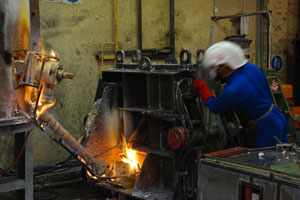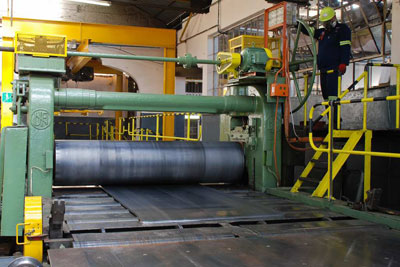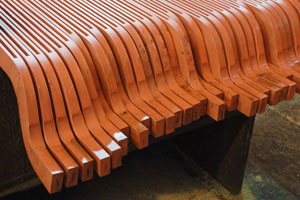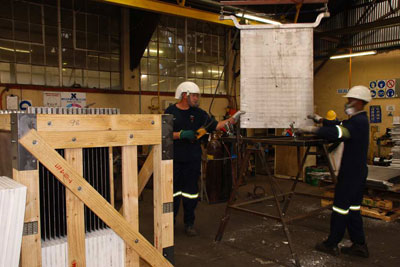Lead-based Alloys
RSR Technologies and Castle Lead Works are both affiliated with the Quexco group which ensures the application of leading technology when it comes to the manufacturing of anodes.
RSR anodes are designed to ensure an efficient and profitable hydrometallurgical process through maximised extraction quality, minimised maintenance costs and optimised energy utilisation.
These benefits are the result of continuous development in lead-based alloys in order to:
- Increase mechanical strength
- Reduce penetrating corrosion
- Improve dimensional stability to reduce shorts
- Resist anode passivation
- Increase electrical conductivity
- Rapidly form MnO2 and PbO2 layers
- Lower the oxygen Overpotential
Casting and Rolling
Cold rolling of anodes after casting enhances the productivity and life of the anode by breaking up the grain structure and elongating and orientating the grains for a more homogenous microstructure. This enhances the anodes performance through:
- Uniform conditioning and corrosion resistance
- Resistance against creep
- Improved conductivity
- Reduced porosity
Copper Hanger Bar
The rolled anode sheet produced by Castle Lead Works can either be welded to a lead encapsulated copper bar or inserted into a slot in the copper bar before encapsulation and welding. The latter process ensures minimised differentiation in current between the copper and anode sheet. This consistency is sustained for the life of the anode. The alloy encapsulation protects the copper bar and joint from acid mist corrosion.
Anode Care and Maintenance
Anode Care and Maintenance
In order to ensure optimum performance of anodes, it is important to take note of the following recommended practices:
- Store anodes dry and on a level surface to prevent contamination and damage.
- Handle anodes with care in order to prevent bending.
- Avoid storing anodes in electrolyte to prevent the formation of lead hydroxide or lead sulphate.
- During the first fill a current density of 100 A/m2 is recommended until all cells are filled where after the current density may be gradually increased in steps of 50 A/m2 each 48 hours until the standard operating current is reached. This ensures the formation of a stable lead oxide layer.
- A minimum voltage of 1.7V needs to be maintained to enable conditions for stable lead oxide formation.
- For current interruptions of less than 24 hours, the following power ramp up guideline should be followed:
- Initial Current – 50 A/m2
- After 5 Minutes – 100 A/m2
- After 15 Minutes – 150 A/m2
- After 25 Minutes – 200 A/m2
- Then raise 5 A / anode * minute
- Anodes need to be cleaned using pressurised water in order to remove loosely adherent lead oxide flakes to prevent contamination of the cathode deposit. The surface should still be black after cleaning – do not polish or scrape the surface.
- Cells need to be cleaned at regular intervals to remove slimes build up and prevent cathodes deposit contamination and shorts.
- In time anodes could become bent and may require straightening. Castle Lead Works has a patented straightening machine available for purchase.



